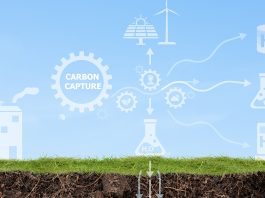A recent Chung-Ang University study has unveiled a new method that allows for the sustainable conversion of CO2, potentially offering a replacement for current conventional approaches.
Researchers from Chung-Ang University in Korea are conducting research on carbon capture and utilisation processes that use waste materials or abundant natural resources as raw materials. This ensures the technology’s economic feasibility.
In their new study, the team, led by Professor Sungho Yoon and Associate Professor Chul-Jin Lee, looked at the utilisation of industrial CO2 and dolomite for the production of two commercially viable products: calcium formate and magnesium oxide.
The study, ‘Kinetic conversion of magnesium and calcium ions of dolomite into useful value-added products using CO2,’ was published in the Chemical Engineering Journal.
Why is the sustainable conversion of CO2 important?
Climate change is a major concern that must be prioritised. Because of this, countries around the world are drafting policies to reduce the impact that it will have.
For example, the EU has recommended a comprehensive set of guidelines to achieve climate neutrality by 2050. The European Green Deal also emphasises the importance of reducing greenhouse gas emissions.
One way to limit the impacts of global warming is through the sustainable conversion of CO2.
Scientists are therefore looking into carbon capture and utilisation technology as a promising approach to expanding CO2 storage and conversion at a low cost.
Problems with current carbon capture research
Global carbon capture and utilisation research are limited to around 20 conversion compounds, however.
Given the variety of CO2 emission sources, it is critical to have a wider range of chemical compounds.
This demonstrates the importance of delving deeper into processes that can convert CO2 at low concentrations.
The team used a catalyst to add hydrogen to CO2
In the new study, the team used a catalyst (Ru/bpyTN-30-CTF) to add hydrogen to CO2. This resulted in the production of two value-added products, calcium formate and magnesium oxide.
Calcium formate is used as a cement additive, de-icing agent, and animal feed additive, amongst other applications such as leather tanning.
In contrast, magnesium oxide is used in the construction and pharmaceutical industries.
Not only was the team’s process viable but it was also extremely rapid, yielding the products in five minutes at room temperature.
As well as this, the researchers estimated that this process could reduce global warming potential by 20% in comparison to traditional calcium formate production methods.
“There is a growing interest in utilising CO2 to produce valuable products that can help mitigate climate change while creating economic benefits.
“By combining CO2 hydrogenation and cation exchange reaction, a process for simultaneous metal oxide purification and high-value formate production has been developed,” stated Professor Yoon.
Could the team’s method replace current CCU approaches?
The researchers evaluated if their method could replace current production approaches. To do this, they checked the environmental impact and economic feasibility of their sustainable CO2 conversion method.
“Based on the results, we can say that our method offers an eco-friendly CO2 conversion alternative that could replace the conventional approaches, potentially contributing to the reduction of industrial CO2 emissions,” Professor Yoon explained.
Combining waste material recycling with carbon capture is economically viable
Although the sustainable conversion of CO2 into products is promising, these processes are not always easy to scale up.
Most CCU technologies have not been commercialised due to their low economic feasibility compared to conventional commercial processes.
“We need to combine CCU processes with waste material recycling to make them both environmentally and economically beneficial. This may contribute to achieving a net-zero emissions goal in the future,” concluded Dr Lee.





